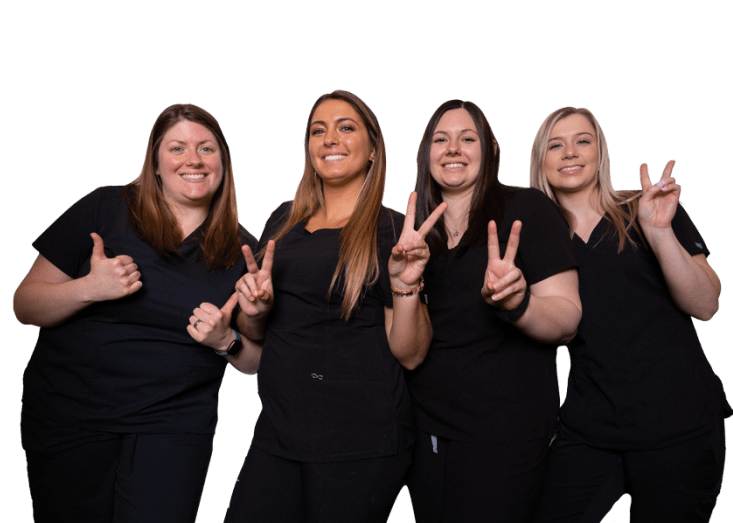Home Care

Good home care and dental hygiene are vital to the overall health of your teeth and gums. Along with dental check-ups and cleanings every six months, daily brushing and flossing can help keep your mouth clean and in good condition. And with pain-free dentistry now available, there’s no reason to neglect your smile!
Choosing a Toothbrush
Proper brushing begins with toothbrush selection. Toothbrushes should always be soft-bristled, never medium or hard. Bristles that are medium or hard stiffness can contribute to gum recession as well as tooth wear. The head of the toothbrush should also be small enough to allow you to reach all sides of your very last teeth.
Proper Brushing
When brushing teeth, the toothbrush should be held at a 45-degree angle to the gums, with the bristles angled toward the gums. The brush should never be scrubbed forcefully side to side but rather “jiggled” in gentle short motions to feel the bristles working their way under the gums. Bacteria can also be removed from the tongue, roof of the mouth, and cheeks. Brushing these areas regularly contributes to fresher breath.
Choosing a Toothpaste
There are many specialty toothpastes available: whitening, sensitivity, dry mouth, gum disease, and tartar control. Your dentist can help you choose the right toothpaste to fit your needs.
Don’t Forget to Floss and Rinse
While brushing removes plaque at the gum line, floss works to clean the deeper areas the toothbrush cannot reach, specifically between the teeth and deeper below the gums. This is why it is important not to just brush the teeth but to use floss daily to ensure that all plaque is removed.
When flossing, glide the floss between the teeth and form a “C” around the first tooth. This will allow you to adapt the floss to the curves of the tooth. It is important to be sure to move the floss to the deepest areas it can go below the gums to be certain that the deepest plaque is reached. Never “saw” the floss between the teeth. Rather, it should be moved up and down between the tooth and gum.
Many patients prefer to use pre-threaded flossers to allow easier flossing. Any floss that easily glides between the teeth and can reach to the deepest part below the gums can be used.
Mouthwashes can be used to help freshen breath and aid in destroying bacteria. Mouthwashes should not be used in place of flossing or brushing.
At-Home Dental Tools
There are many oral hygiene aids and tools available over the counter to use in caring for your teeth and gums. Dental picks, irrigators and tongue scrapers are just a few of the tools you may find. Your dentist will help you determine if they will contribute to improving your dental health. These tools are adjuncts and are not meant to replace regular brushing and flossing.
Having dental check-ups and cleanings every six months is vital to your oral health and covered by most insurance plans. Please call us immediately at 203-377-9300 to schedule an appointment.
If you have questions regarding teeth whitening costs, contact our office for more information.
-
Monday - 9:00am–5:00pm
-
Tuesday - 8:00am–5:00pm
-
Wednesday - 8:00am–5:00pm
-
Thursday - 8:00am–5:00pm
-
Friday - 8:00am–5:00pm

